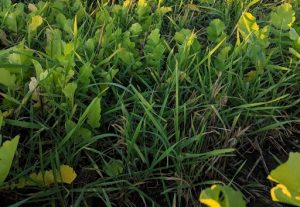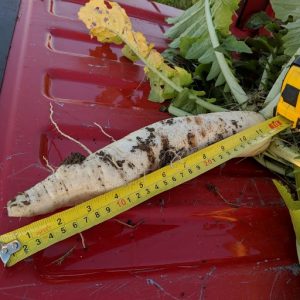Agronomy, Conservation, Homepage Slider
Not Your Grandparent’s Soils
By Dusty Sonnenberg, CCA, Ohio Field Leader: a project of the Ohio Soybean Council and soybean checkoff.
“You are not farming the same soils your grandparents farmed,” said Hans Kok, Program Director for the Conservation Technology Information Center in Indiana.
Kok spoke during a presentation at the Ohio No-till Council’s Winter Conference and described the origins of the soils we find in this part of the Midwest, going back to the glaciers and continuing to the modern soil challenges we face. Over the past 100 years, farming practices employed in America have led to a deterioration of the soil quality. “Data from the University of Illinois shows that on plots dating back to 1873, we have lost about 80% of the organic matter in the soils that have been farmed continuously since that time.”
Kok believes that producers can reverse this trend by adjusting their farming practices. One change he recommends is to incorporate the use of cover crops. Cover crops have many benefits. “We get erosion control, nutrient retention, and now we see we are also getting benefits from weed control in some situations,” said Kok. “Cover crops also help with drought and flood control as we face changes in the climate.”
At the end of the day, farmers are concerned about yield and profitability. “Cover crops can help increase yields,” said Kok. “They can also help increase profit. There has been some bad press when farmers have not understood how to best manage their cover crops, or selected the wrong cover crops to use on their farms. They have lost yield and money, but if managed properly, both yields and profits can increase.”
An example of selecting the wrong cover crop is to plant cereal rye in front of corn. “Cereal rye uses a lot of water, and uses a lot nitrogen, so as a result, the following corn would be planted in a nitrogen deficient environment,” said Kok. “Farmers need to pay attention to what they plant, where they plant it, and when they plant it, for it to be successful.”
An example of selecting the right crop is cereal rye in front of soybeans. “Cereal rye provides excellent weed control when planted at the right rates,” said Kok. “Radishes are also good for weed control because they have some bio-fumigation effects.” Radishes should not normally be planted alone. A radish-cereal rye grass mixture is a good option for controlling weeds.

Cover crops can be used to help manage nutrients. “Nutrient needs can be reduced if we use our cover crops well,” said Kok. “We have a lot of nutrients left over at the end of the growing season, especially after a corn crop. Cover crops can help capture a lot of these nutrients.”
Cereal rye and radishes will capture and hold nitrogen along with other nutrients left from the previous cash crop. These nutrients are then released and become available as they break down in the spring and summer months. “The weather does play a role in this nutrient management process,” said Kok. “Planting cereal rye early is important to be able to capture more nitrogen.”

Using a combination of cover crops, in a mix, works better than just one single cover crop species, in capturing nitrogen. Cereal rye with radishes, or Radishes with oats can capture a lot of nitrogen. The radish and oats mix will winter-kill, and could risk erosion in the spring. “If you apply manure to a field, cover crops can be extremely helpful in sequestering the nutrients and holding them until the next season,” said Kok.
Can farmers actually grow nitrogen? “The literature is always full of articles about growing 200 pounds of nitrogen using cover crops,” said Kok. “That is really pushing it in Northern Indiana and Northern Ohio. Farmers need to be careful figuring out how much nitrogen they can grow, and how they do that. Some farmers use multiple species cover crop mixes to supply the nutrients needed. It takes a lot of management. These mixes need to contain some species that will freeze out, and others that can easily be controlled and terminated in the spring, with chemicals or by rolling,” said Kok. Often times it takes years of crop rotation with no-till and then growing cover crops to get a system and comfort level in place before trying to significantly reduce the nitrogen used on the following crop.